
Salty Sam’s Fun Blog for Children
Number 541
Plant Communication
Hello Everyone

We know that animals communicate with each other all the time.
Birds display to each other with plumage when they want to attract a mate or chirp furiously when they want to warn others of danger.
Dogs bark, rabbits thump the ground, deer flash their white tails to send out warnings that danger is around.
Cats raise the fur on their back when they are scared and feel they may need to fight and protect themselves.
Monkeys chatter to each other – and scientists have found that some even have regional accents depending on the location of their group.
Humans have complicated language to communicate with each other and hundreds of languages have evolved over the world.
But plants also communicate with each other in their own way.
lsn’t that amazing?
So how do they do this?
Well, they have a system of communication mostly hidden from humans and a lot of scientific investigation has helped us to begin to understand how it works.
This is some of the story…
Fungi are a species that evolved separately from plants and animals. Fungi are not really classed as plants.
Fungi like mushrooms and toadstools cannot photosynthesise – that means make food in their cells from sunlight.
When you see mushrooms or toadstools above the surface of the ground or the bark of a tree you are only seeing the fruiting body of the plant – they are only the tip of the iceberg, so to speak.
The main body of the plant is beneath the surface of the soil or bark. lt looks like lots of branching hair-like roots that look like they are made of a substance a bit like cotton.
These web-like structures are called mycelia; they take up nutrients from soil or rotting wood.
The mushrooms you see above the soil spread spores which will produce new fungi like seeds produce new plants, and that is why they are called the fruiting body. Fruit on plants contain seeds.
The mycelia that spread under the ground can connect with tree roots and feed off them. Trees are able to photosynthesise. Their leaves are a food factory making food from sunlight all through the summer months. This food is like sugars.
The mycelia are connected to the roots of trees. The mycelia extend the area of ground that a tree can absorb nutrients from.
This means the fungi benefit from the trees and the trees benefit from the fungi. They give food to each other.
This relationship of mutual benefit is called a symbiotic relationship.
Trees that are connected to mycelia grow better, are healthier and have more longevity – that means that they have a longer life.
Furthermore, the trees are connected to each other through the mycelia – because the mycelia become an extension of the tree and are connected to other trees too.
We call this interconnectivity the woodwide web!
This woodwide web sends information through the forest floor.
lf any tree is attacked, by an infestation of insects or caterpillars for example, it can tell the other trees, even trees that are of a different species, what is happening to it.
Once a tree has been alerted to potential danger by one of its companions, it will take action to protect itself.
ln order to set up a defence system, it produces a compound called glutamate which signals for calcium to shoot through the veins of the leaves.
The plant being attacked by insects or caterpillars then produce jasmonic acid which makes the plant taste bad. Attackers won’t want to eat a bad-tasting plant.
Then green leaf volatiles are produced. These are organic compounds that are released when a plant suffers tissue damage.
Volatile means an evaporating vapour which may well have a strong smell.
Nearly every plant produces these, but you will know the smell of cut grass probably better than any other volatile.
The volatiles are signalling that the plant is being attacked and damaged – in the case of grass it may well be being attacked by a lawnmower!
All plants in the vicinity will pick up the signal and produce jasmonic acid themselves. They make themselves taste bad because they don’t want to be eaten. This is self-protection – they can’t run away like animals can!
The predators which eat the insects or caterpillars that are attacking the tree will also pick up the smell of the volatiles and realise there is food to be found. They come in for a tasty feast of invertebrates relieving the plant of its attackers.
The plants are communicating with their volatiles to the birds and mammals that can come to their rescue!
On the other hand, if a plant wants to eat insects, it will emit volatiles (that might smell like decaying flesh for example) this will encourage insects nearby so that it can trap them. The plant can’t run after its food, it has to entice it in.
So plants are communicating to each other and also to animals.
Plants communicate to each other above and below the ground.
They are also able to communicate to each other by using tiny electrical signals.
This too relates to sending out warning signals to other plants in relation to potential threats and attack.
lt has also been observed that plants can communicate to each other across the whole country!
This happens when they are deciding to create a mast year.
A mast year is when all the trees of a certain species (like beeches or oaks for example) will produce a bumper crop of seeds. (Mast is a word like seed or nut.)
A mast year will not occur at regular intervals. They just happen when all the trees of one species decide to have mast year.
Scientists still do not know how they decide on when to do this, or how they all decide to produce their large crop of seeds at the same time.
lnvestigation continues…
Bye bye everyone – don’t forget to subscribe to my blog!
Love and kisses
Salty Sam

www.christina-sinclair.com


Bill and Bob’s Joke of the Week![]()
![]()
Bill: What is the colour of the wind?
Bob: l don’t know.
Bill: Blew!
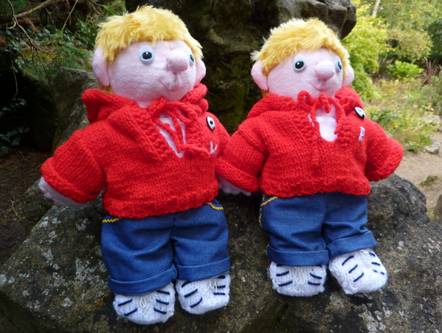
Salty Sam © Christina Sinclair 2015
Unauthorized use and/or duplication of material from this blog without express and written permission from this blog’s author and owner is strictly prohibited.
Links may be used to www.christina-sinclair.com

Picture Gallery

Fruiting bodies
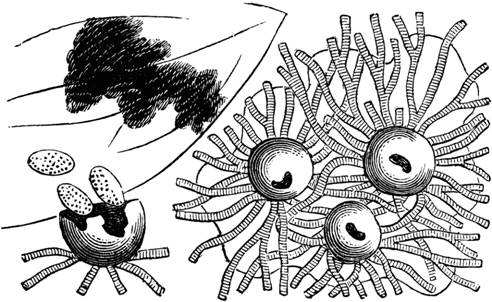
Fungi reproduce through spreading spores rather than seeds
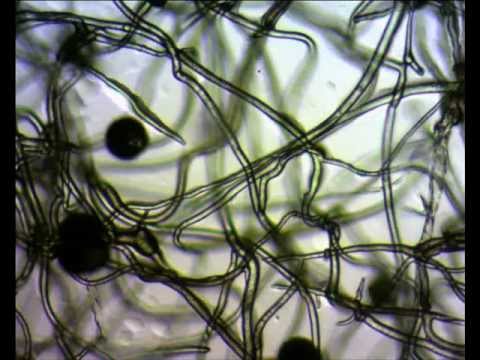
Mycelia
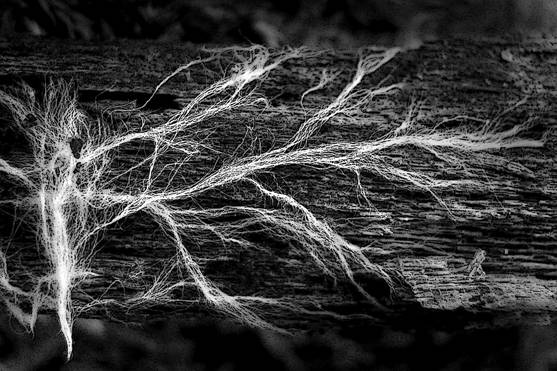
Mycelia
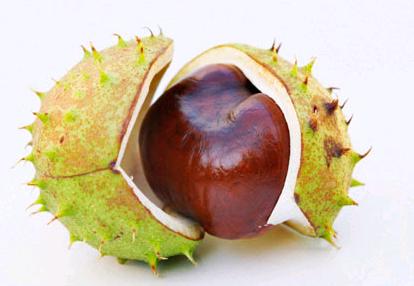
Conker from a horse chestnut tree
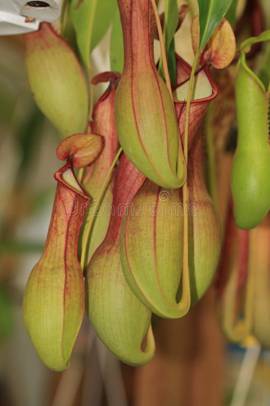

Insect-eating plant


 THE SALTY SAM NEWS DESK
THE SALTY SAM NEWS DESK

A couple of weeks ago Bill, Bob, Henry, Emily and I walked past the churchyard and noticed how neglected it had become.
A lot of the graves in there are very old and forgotten about. They are not tended anymore. Some people who grew up in Rocky Bay moved away to big cities to get work and don’t visit here anymore and some graves are hundreds of years old.

It didn’t take long to get a working party together. A lot of the people who work in the Rocky Bay Community Orchard came to help and there were some other people as well.
Last week, we got to work.
The first thing to do was clear away all the scrub and dead bushes and put them through a shredder so that we could make our own mulch for free.
Then we cut the grass and carted it away to the compost heaps in the orchard and the vicar’s garden.
The plan was to plant a mass of wild flowers between the gravestones. They will be pink and white and yellow and red and blue and mauve. I think it will look really pretty.
So instead of having flowers on the graves – there will be flowers between the graves!
Even if nobody ever visits any of the graves there will always be flowers for the people buried there – what a nice thought.
There will also be lots of food for the bees who will now be living in the new hives set up in the orchard in the summertime once the spring blossom in the orchard has faded away. So that is a real bonus.
The flowers will seed themselves in the years to come once we get them started with some plugs that we are going to propagate.
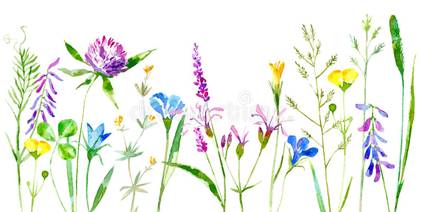
Then it was time to plant some trees – and there was plenty of space to do that.
You can plant trees grown in pots at any time of the year. Only bare rooted stock has to be planted between November and March.
Farmer Jenkins very kindly brought the young trees from where the children had grown them in Auntie Alice’s garden to the churchyard on the back of his trailer. Trees are not easily carried inside a car!
There are already ancient yews growing by the church and we planted a couple of hornbeam trees near them behind the front wall. They have a very smart, even shape to them when they have space around themselves to spread out.
There will still be plenty of sunshine coming over the south wall to fall onto the flowers.
Then along the back walls of the yard we planted cherry and rowan trees. They will both have blossom on them in the spring and fruits on them later in the year. The cherries and berries will be eaten by the birds.
When the trees are bigger, we will come back and put some bird nesting boxes up in them.

We planted an oak in the far corner. When it grows bigger it will throw some much-needed shade into the vicarage garden.
Then we planted a small row of silver birch along the roadside leading up to the vicarage gates.
All the trees were free because the children had grown them from pips and seeds.
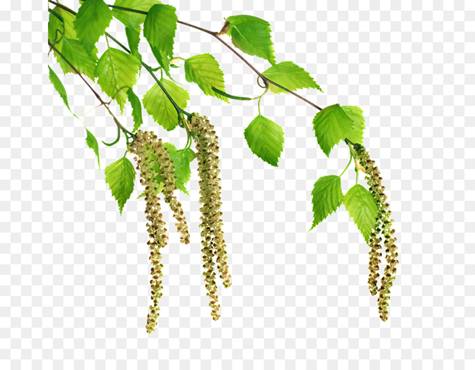
When they saw the trees planted up, they were so proud of themselves!
Those trees will be there for many years to come.
It just shows you how clever children can be!
Last of all, we very importantly put the mulch we had made around the base of the trees so that the grass would not compete with them and choke them.
We also put rabbit guards on the trunks and gave them a good watering in with a hosepipe run over from the vicarage garden.
So there you are – you can always find space somewhere for a new tree!
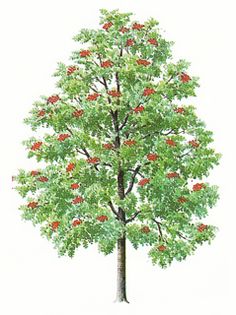
Some of the working party took some more of the trees home with them to plant in their gardens.
Farmer Jenkins took the last few to put into a hedgerow on the farm.
Then Bill and Bob went home to start potting up some new trees.
A trillion is a very big number!

As you know, it is very hot at the moment. The working party got to work early in the morning last week before the air got really hot. And after we watered the trees, I must admit there was a bit of watering each other that went on. Well, a full-on water fight at one point!
But seriously, there are a few thing to remember to keep yourself safe and healthy in the hot weather…

Do not jump into very cold water, it might feel like a quick way to cool down but a body does not like you doing that, it comes as too much of a shock
Do not jump into strange water like jumping off a pier into the sea, you may hit something you can’t see
Drink plenty of water throughout the day
Wear sunscreen
Do not put your sunscreen on your pets, get some special cream from your vet for their ears and nose – this is especially needed by white animals
Never leave your pets in the car alone
Make sure your pets have plenty of water to drink
Let them lie in peace in the shade, take them for a walk early or late in the day when the sun is not at its hottest
If they like playing in water, buy them a paddling pool with rigid sides so that they can’t puncture the paddling pool and spoil their fun
And please put drinking water out for birds, bees and small mammals

*********************
*********************

 Quick Quiz
Quick Quiz
These signs tell you that you can expect something up ahead.
What something would that be?













lt’s the Weekend!
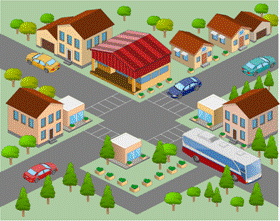
HOW TO MAKE A CAR CARRYlNG BAG
This bag would be ideal to use for carrying up to six small toy cars when you go to your grandma’s house to play. The cars are separated inside so that they do not bash against each other, this will help the paint from getting chipped.
You may want to knit it in a more practical colour than white; like blue or dark green. Remember that knitting with black is not easy for knitting newbies.
The bag could also be used for carrying dolls, dolls’ clothes or even toiletries or make-up.
If you put it on a belt it could be used for carrying toy tools – not real ones though, they are too sharp.

BAG OUTSIDE (KNIT TWO)
Using 4mm knitting needles and dk yarn cast on 46 stitches
Knit 2 rows of garter stitch
Slip 1, knit 45
Slip 1, purl 14, knit 1, purl 14, knit 1, purl 14, knit 1
Repeat the last 2 rows 14 times
Knit 1 row
Knit 1 row
Knit 20 rows of stocking stitch
Knit 6 rows of garter stitch
Cast off
BAG INSIDE CENTRE PANEL (KNIT ONE)
Using 4mm knitting needles and dk yarn cast on 44 stitches
Knit 30 rows of stocking stitch
Knit 2 rows of garter stitch
Cast off
TO MAKE UP
- Sew the bottom and sides of the centre panel to the inside of one of the outer panels at the bottom and sides
- Over-sew around the two outer panels along the bottom and sides with wrong sides together
- Using running stitch, sew along the two channels you created in you knitting in a matching yarn to create the inner compartments – sew through all three thicknesses
- Crochet 120 chains into a length of yarn and thread it into the garter stitch channel at the top of the bag

Please note that the material on this blog is for personal use and for use in classrooms only.
It is a copyright infringement and, therefore, illegal under international law to sell items made with these patterns.
Use of the toys and projects is at your own risk.
©Christina Sinclair Designs 2015


Quick Quiz Answers
Crossroads
Loose stones on the road
The road narrowing
Children crossing the road
Loose things that may fall
Traffic lights
Bumps in the road
Train tracks crossing the road
No entry to a road
lf you see a sign with an animal on it,
you should be aware that there are animals in that district crossing the road




If you are going for best contents like I do, simply visit this web site everyday since
it offers quality contents, thanks
That is very nice of you to say so Frank. Thank you for writing in.